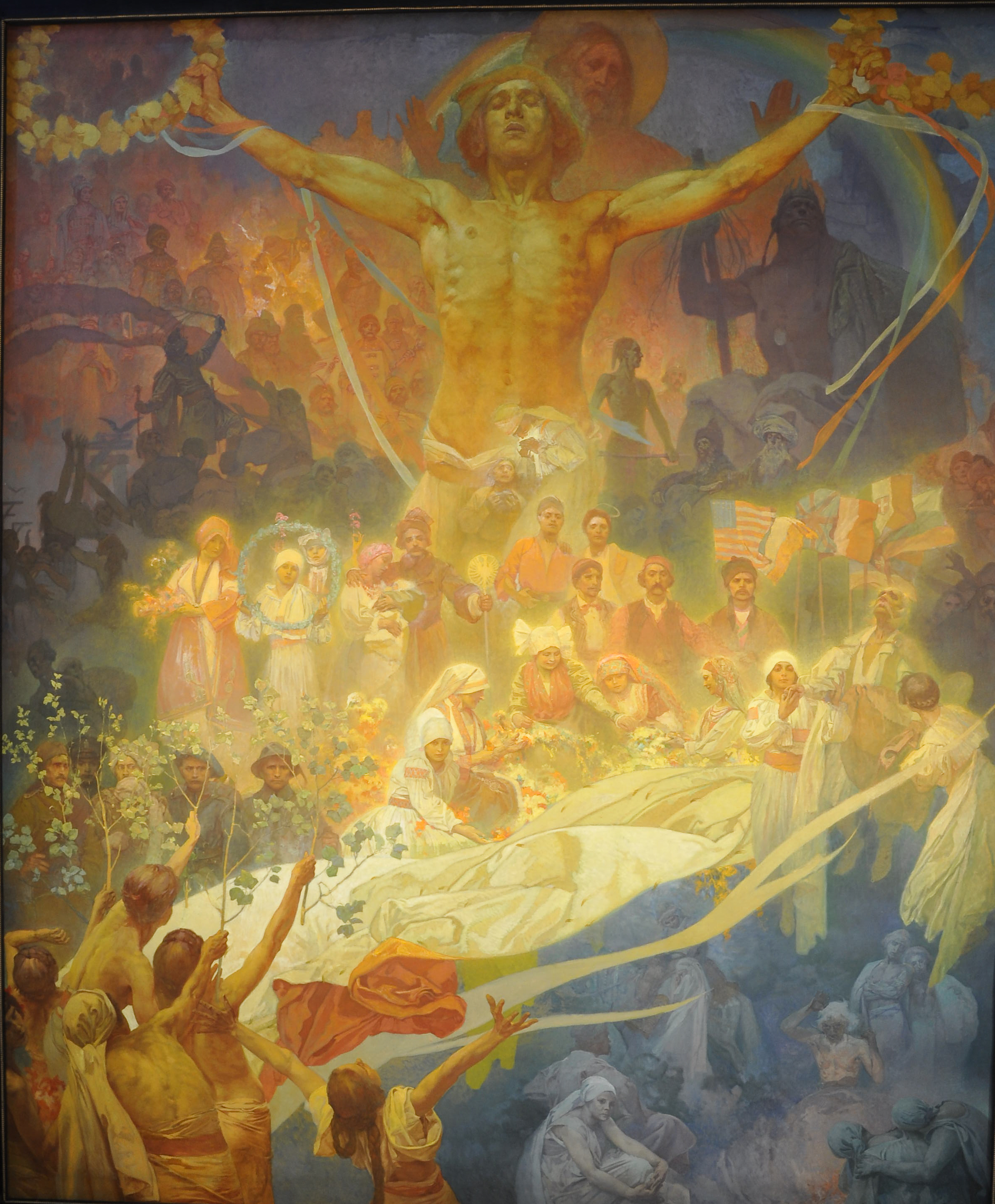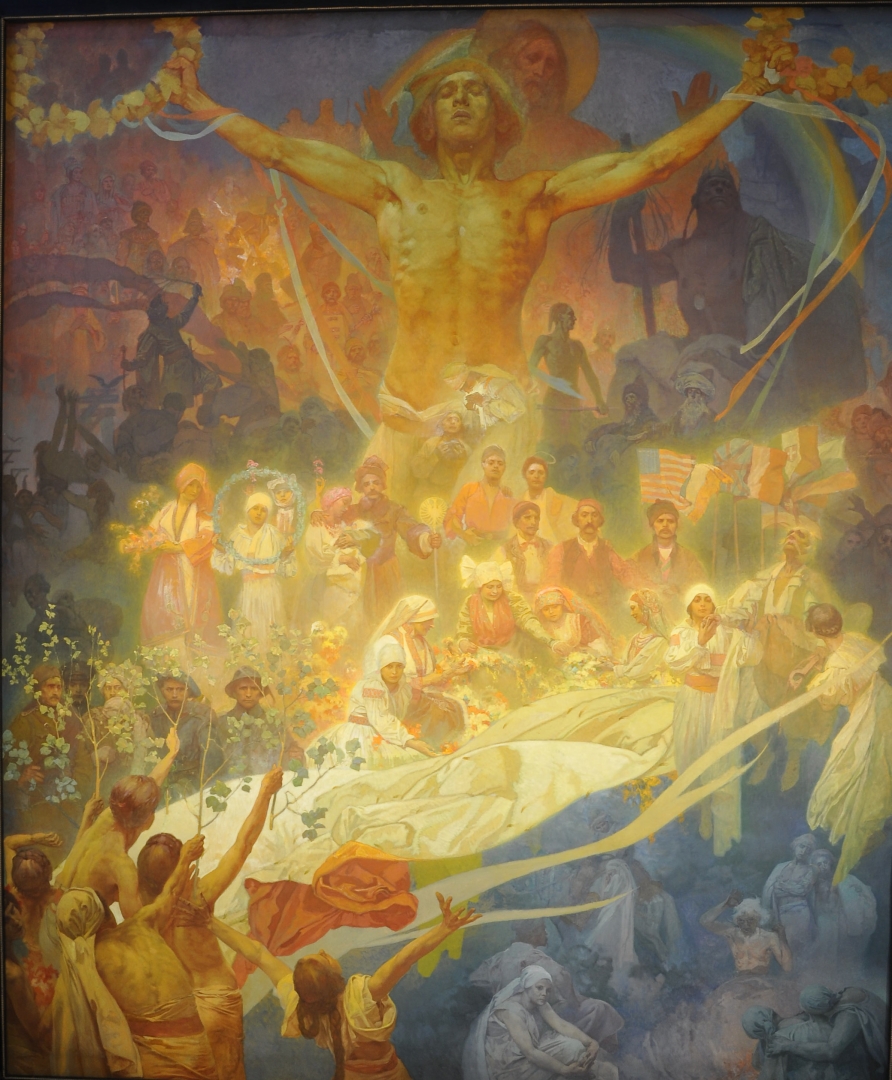APOTHEOSIS OF THE SLAV HISTORY
The last painting sums up the Slavs' history and, at the same time, the whole Slavic epic. Four colours section the scene.
At the bottom right, the colour is blue - it symbolises antiquity and the Slavs in their homeland when they still worshipped pagan gods. Zhrets, the Old Slavic priest, presents a burnt offering to the gods.
In the upper third of the painting, the colour is red, commemorating the famous moments of Slavic history - the most important Czech rulers - Přemysl Ottokar II, Charles IV and the last Czech king George of Podebrady. Furthermore, the reformational ideas of Jan Hus and the success of the Hussite movement.
Under the red, the black section follows, symbolising the lost battles and the period of oppression of the Slavs: raids by the Franks, Avars, and Turks and 300 years of oppression of the Czech language after the Battle of White Mountain.
The largest area of the canvas is painted yellow - the colour of joy and freedom. The First World War ended in 1918, and after the disintegration of the Austro-Hungarian Empire, many Slavic nations achieved freedom. At the bottom left, people welcome legionnaires returning from abroad. Women in Slavic national costumes knit garlands and prepare flags for the celebration of independence. On the right, an old man thanks God that he let him live long enough to experience freedom. The flags of the victorious powers flutter behind them. On the left, we see representatives of the Slavic nations.
The figure of a young Slavic man dominates the upper part of the painting. He spreads his arms wide to show that he is finally free. He holds wreaths of victory and unity with ribbons of a Czechoslovak tricolour tied to them. Behind him, Christ blesses all the Slavic nations. The image ends with a rainbow, symbolising the most important idea of the entire Slavic Epic cycle: peace between nations.

